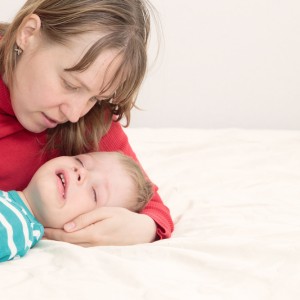Home MI-E Therapy Benefits Quality of Life For SMA Children & Families

 Parents want what is best for their children, and parents of children with spinal muscular atrophy (SMA) are no exception. At times, these parents can feel stressed about their children’s medical condition, and any way that stress can be alleviated is vital to improving parent outlook on managing their children’s health while providing a positive benefit to the quality of life of their children.
Parents want what is best for their children, and parents of children with spinal muscular atrophy (SMA) are no exception. At times, these parents can feel stressed about their children’s medical condition, and any way that stress can be alleviated is vital to improving parent outlook on managing their children’s health while providing a positive benefit to the quality of life of their children.
One way of managing SMA incorporates the use of a mechanical insufflation-exsufflation (MI-E) device. This device is used to generate alternate positive and negative airway pressure in patients with weakened muscles to initiate coughing and clear mucus and other airway secretions. According to Fiona C. Moran, DClinPhysio, “MI-E is increasingly used in the home management of children with neuromuscular disease.”
Dr. Moran, along with Alicia J. Spittle, PhD, and Clare Delany, PhD, all from three different medical research institutes in Australia, discussed the realistic positives and negatives of MI-E devices in the article “Lifestyle Implications of Home Mechanical Insufflation-Exsufflation for Children With Neuromuscular Disease and Their Families,” published in the journal Respiratory Care.
The researchers conducted semistructured interviews with eight parents of children with neuromuscular disease and three of the children who were old enough and willing to participate in the interview. Seven of the eight parents had a child with SMA type 2, and the other parent had a child with Duchenne muscular dystrophy. The children spanned an age range of 4 to 18 years.
When conducting interviews, the researchers used an outline that highlighted six broad areas — usage, initial thoughts and reactions, current thoughts, impact on lifestyle, impact of technology within the home, and advice for the future — while keeping the questions open-ended to allow deviations in the interviews to explore other interesting, more important topics.
Parents had mixed feelings about home MI-E. Some felt it gave a greater level of control by enabling them to improve their child’s health, while others felt the machine represented a last resort or a loss of control over disease progression. Regardless of the sense of control, all parents felt they were experts or becoming experts in MI-E. “[Four] years ago, I was a complete novice. Now I’m a professional specialist,” stated one mother in an interview.
Another subject of mixed feelings was how much extra care parents felt MI-E added to their child’s healthcare routine. Some saw it as a relatively easy addition to respiratory treatment, while others felt it could be burdensome.
None of the parents felt administering MI-E treatment changed the parent-child relationship that existed before having a household MI-E device. Changes were noted in parent lifestyle, as most parents are the sole operator of the device and must rush to attention if the device is needed.
Most importantly, children’s lifestyles were enhanced with household MI-E therapy, and one girl even noted a benefit to her siblings’ lifestyles. “I don’t have to come to the hospital, so [my brothers] don’t have to miss out on stuff because I have to come into the hospital,” she stated.
While the results of this study are only qualitative in nature and from a limited number of patients, the content within the interviews is valuable for anyone thinking about beginning, or needing to begin, household MI-E therapy. “The positive impacts included greater ability to manage the child’s health, including avoidance of hospital admission,” concluded the authors. “Negative impacts were greatest for those parents who were sole operators of the device, including a frequently disrupted lifestyle.”







